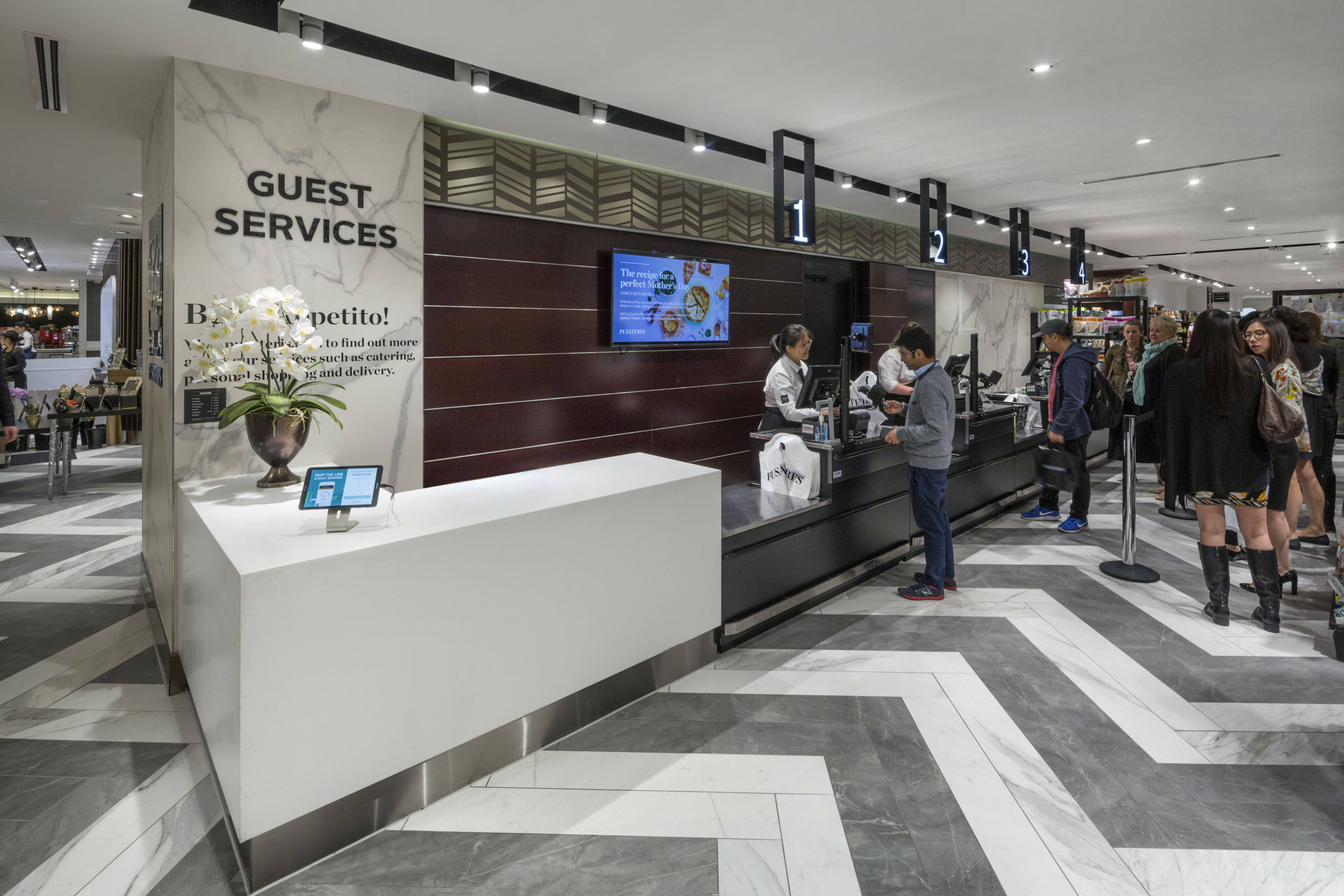Consumers are feasting on food halls, according to Cushman & Wakefield.
By 2020 the number of food halls will have tripled, according to the firm’s latest Food Halls of North America: The Sharing Economy for Restaurants report. “No other retail category has generated as much aggressive expansion over the past few years as food-related retail — and since we released our first report in 2016, the concept’s popularity has continued its meteoric rise,” said Garrick Brown, a Cushman & Wakefield vice president of retail intelligence for the Americas. “It’s easy to see why landlords and developers love food halls: They resonate with consumers, drive foot traffic and are ideal fits for a marketplace in the midst of new commerce-driven disruption. Food halls offer consumers a definitive experience, and for that reason, they’re largely e-commerce-proof.”

Food destination Saks Food Hall by Pusateri's, in downtown Toronto
The firm is tracking 230 planned and existing food halls, as well as those currently under development, throughout the U.S., Canada and Mexico.
Food halls are the “ultimate amenity” for mixed-use, office and multifamily projects, according to Brown. As recently as a decade ago, food-related retail concepts were more about convenience than about quality. But fueled by the foodie movement and celebrity chefs, the fast-casual and chef-driven concepts emerged as serious competitors to traditional restaurants. Two years ago “mini food halls” (those smaller than 10,000 square feet) began cropping up at urban office and multifamily properties in metro areas such as Chicago, New York City and San Francisco. Now food halls are staking their claims in the heart of suburban mixed-use developments.
“Food halls are about so much more than just real estate,” said Brown. “They represent an entirely new, lower-cost operating model. For developers and landlords, they drive foot traffic that strengthens their commercial real estate projects. For food hall operators, they are a model that provides a lucrative and necessary service that will only grow in demand. And for the restaurateurs and vendors that occupy the stalls, food halls represent a cheaper and more flexible alternative to investing in stand-alone restaurant space. Food halls are not a fad — food halls are the sharing economy for restaurants.”
Learn more about the role of F&B in changing the retail landscape at the Food for Thought Conference
Register NowBy Brannon Boswell
Executive Editor, Commerce + Communities Today


